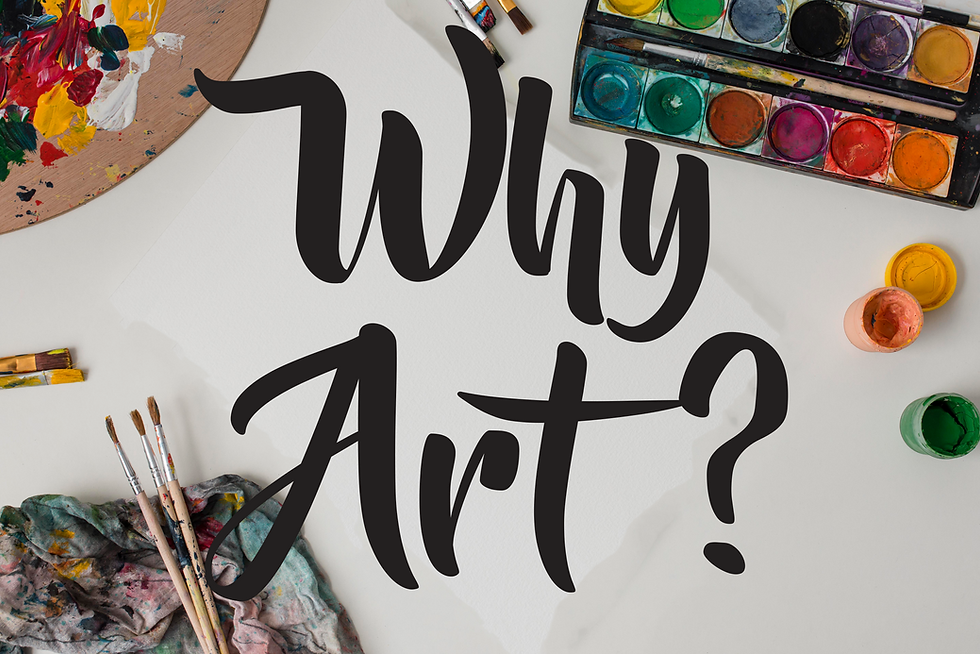Why Teaching Children to Draw Matters
- Hope Creek Studios

- Sep 26
- 4 min read
Why Teaching Children to Draw Matters (and How to Do It Without Crushing Their Creativity)
We often hesitate to teach children how to draw, worried that formal instruction will stifle their natural creativity. But the truth is, kids are already absorbing visual information from everywhere—picture books, cartoons, logos, devices—and many want to learn how to draw better. So why let them struggle alone when we can offer thoughtful, age-appropriate guidance?

Drawing Is a Language—And Children Are Already Speaking It
From the moment toddlers pick up crayons, they begin using drawing as a form of communication. Just like spoken language, visual language develops in stages:
Scribbles and Shapes (Toddlers & Preschoolers): Children experiment with lines and symbols, gradually realizing they can represent things—often beginning with faces.
Symbol Systems (Ages 4–7): Drawings become more intentional—people have arms, houses have windows, trees sprout leaves. A personal library of visual symbols emerges.
Realism Frustration (Around Age 9–11): Kids begin to notice that their drawings don’t match reality. Symbolic drawings of rockets or horses suddenly seem “wrong.” This is a crucial turning point—some dig in and try to improve, but many give up entirely.
This moment is where guidance is most needed. When a child starts to feel defeated by their own art, they need support, not silence.
Does Teaching Drawing Kill Creativity? Actually, the Opposite Is True.
Some adults worry that teaching technique might inhibit imagination. But think about it this way: no one expects a child to write poetry without learning the alphabet first. Likewise, creative expression in art is strengthened when children are taught how to see and draw more accurately.
Learning to draw isn’t about copying. It’s about learning to observe and understand. Once they know the "rules," they can break them creatively and intentionally.
How to Support Your Child’s Artistic Growth at Every Age
👶 Toddlers & Preschoolers: Explore Through Play
At this stage, drawing is all about discovery and joy. Sit with your child and draw alongside them. Narrate what you're doing:“This is a happy face... this tree has curly branches... look at this shiny sun!”
Name shapes, lines, and colors—not just red and blue, but magenta, turquoise, ochre. Your child is building a visual vocabulary, and you’re helping them connect words to forms. Let them scribble, imitate, add their own marks to your drawings, or just watch. Most of all, let them lead.
Never downplay your own ability—your child thinks you're a master artist just for showing up.
🧒 Early Elementary: Build a Visual Vocabulary
Just as you model reading and writing, you can model drawing. Ask about their art with open-ended curiosity:“Tell me about this character... Oh, is she flying? How can we show movement?”
Offer suggestions when they ask—perhaps a curved line for a saddle or quick zigzags for wind. Show them how to express emotion, movement, and ideas with different marks.
This is also a great time to make drawing part of your shared story: draw your day, your work, or a memory. It teaches kids that drawing is not just skill-building—it’s storytelling.
🧑🎨 Older Children: The Skills and the Struggle
When kids start aiming for realism, they also start facing frustration. Their rocket doesn’t look real, their horse is “off,” and their dress design doesn’t match what they imagined. Some power through and draw obsessively; others stop altogether.
This is the perfect moment to introduce actual skill-building.
Take a class together or find simple beginner tutorials online.
Try books like Drawing on the Right Side of the Brain to learn how artists “see” differently.
Encourage consistent practice, but keep it fun and interest-driven. Let them draw what excites them—dragons, sneakers, anime, flowers—not just boring still lifes.
Most importantly, avoid criticism. Never say “That’s wrong” or “That doesn’t look real.” Instead, ask:
What are you trying to show here?
How do you feel about your picture?
What do you like about this part?
Celebrate effort, notice detail, and encourage experimentation.

Don’t Just Critique—Connect
Even well-meaning feedback can harm a child’s confidence if it invalidates their work. Avoid these common pitfalls:
🚫 Imposing your own interpretation:“Oh, a cute dog!” “It’s a horse.” “Oh... well, it looks like a dog.”
🚫 Expecting realism too soon: We often ask children to draw things they’ve barely seen or experienced in real life. That’s unfair and discouraging.
🚫 Dismissing realistic effort as "tight": As older kids try for realism, don’t discourage them by calling their art stiff or boring. They're learning a new way of seeing—it takes time.
Instead, offer specific, supportive comments like:
“You’ve really noticed those tiny dots on the wing!”
“This reminds me of a painting we saw in the museum.”
“I love how bold your colors are.”
Learning Together: Model Growth Mindset
You don’t need to be a great artist to help your child grow as one. But you do need to model curiosity and humility.
Try drawing yourself. Show your child you're still learning too.
Share your mistakes and discoveries.
Take art classes together or sketch in a park.
When you show that learning to draw is a journey—not a talent—you give your child the freedom to enjoy the process and persevere through the hard parts.
Final Thought: Drawings Are More Than Pictures
Children’s drawings aren’t just images. They’re expressions of how they see, feel, and understand the world. Respect those expressions. Celebrate them. And yes—teach them to draw.
You wouldn’t let a child try to write without learning letters. Don’t let them try to draw without learning how to see.

©HOPECREEKSTUDIOS2025




Comments